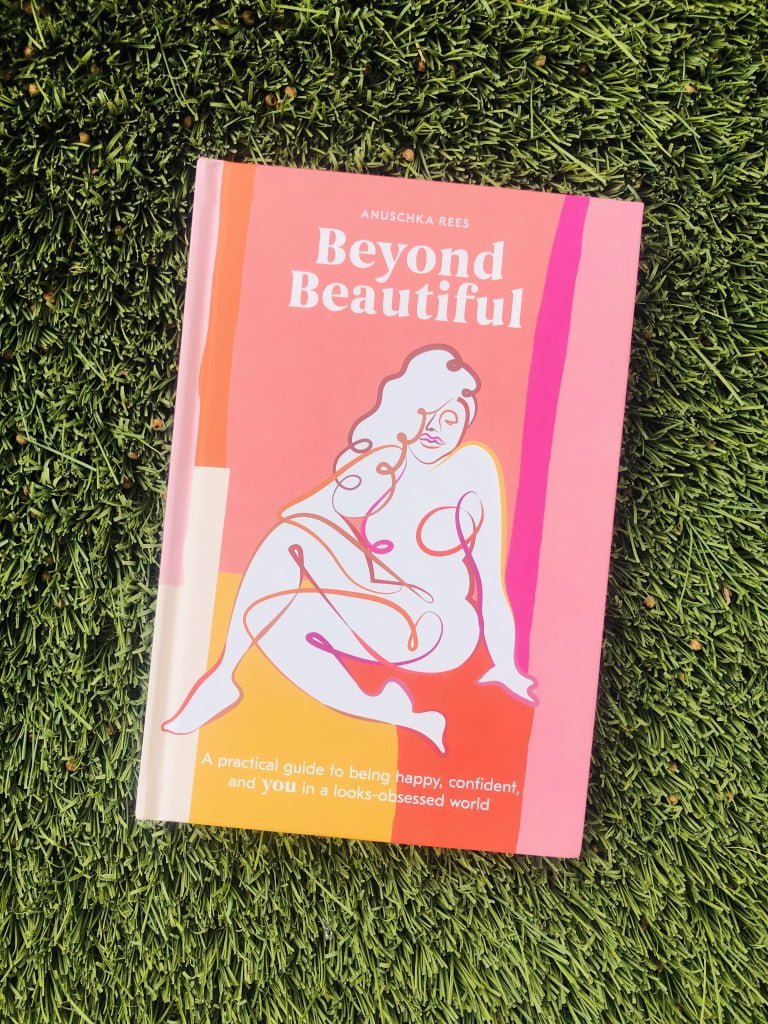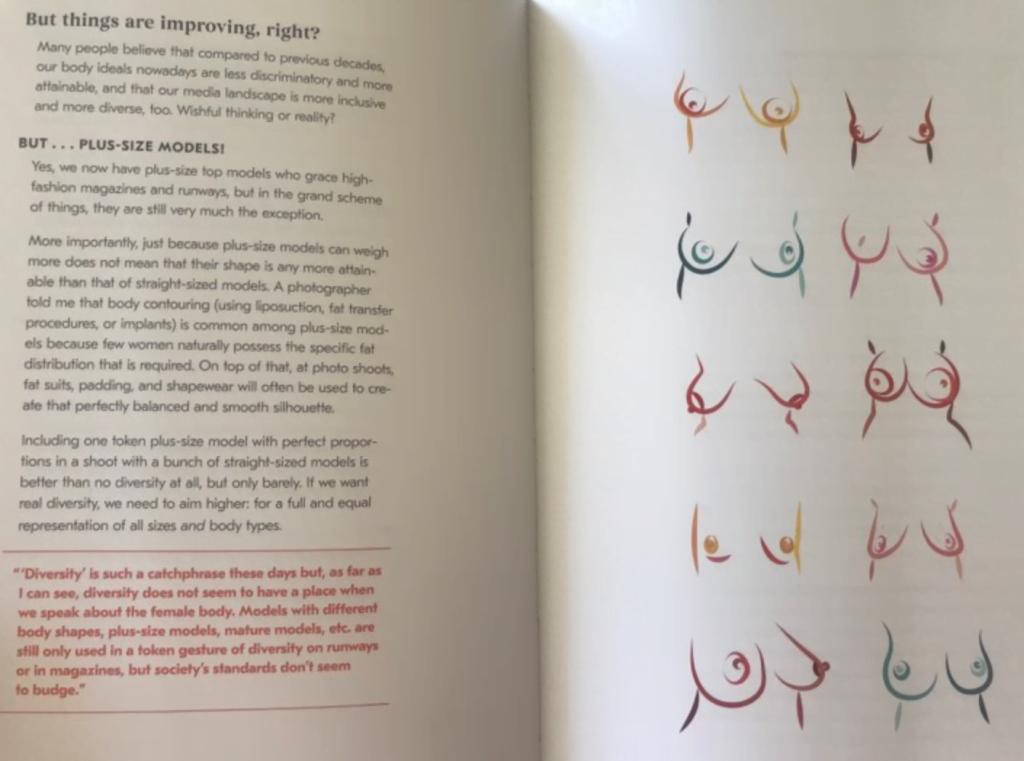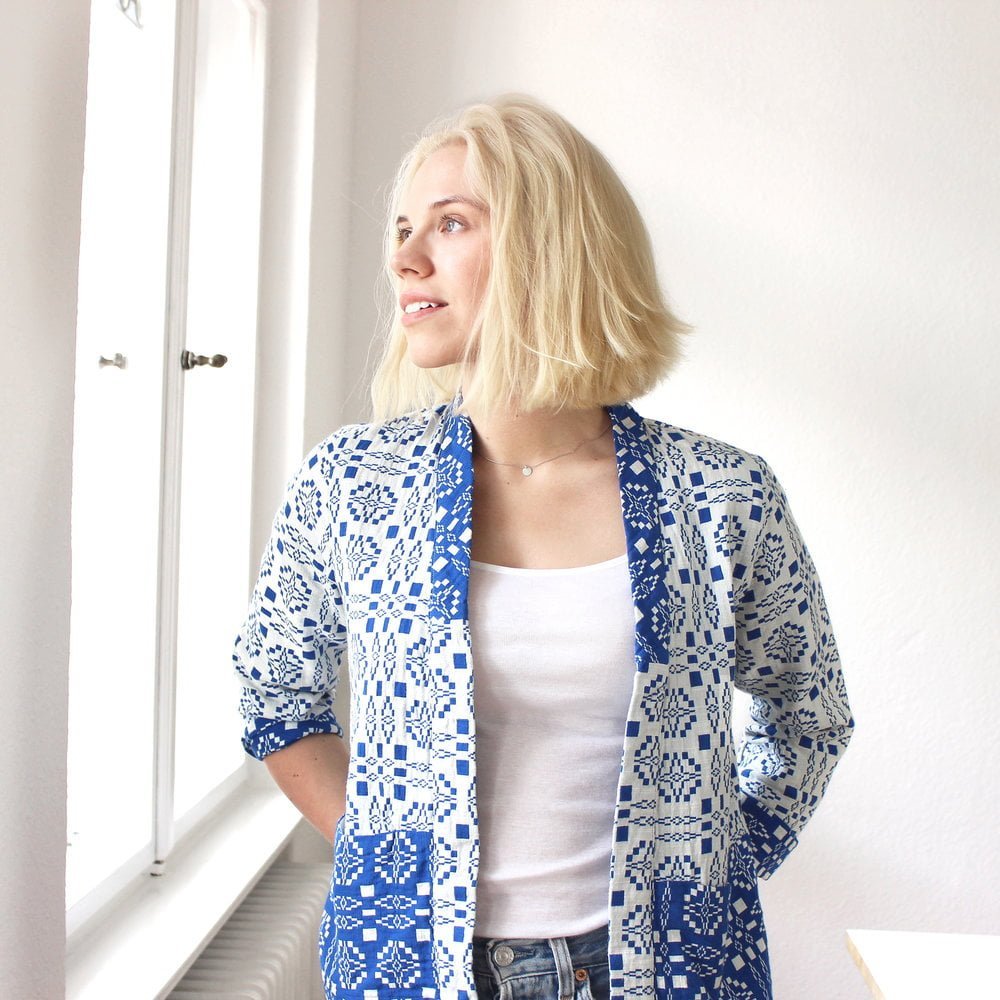Beyond Beautiful by Anuschka Rees is an empowering and psychology driven guide that rewires the belief that a woman begets her charm and identity from toilette and beauty. Rees has partitioned her manual of body neutrality into three broad divisions—unpacking the problem, rewriting your mental script, and taking back power. Illustrated with colorful graphics, the book is interspersed with survey responses from 606 women Rees interviewed. These conversational snippets connect with the readers on an emotional front and cushions the loaded blow of body image.
The novel is flagged with reflection questions like—”How prevalent is body talk within your different peer groups? Do you sometimes feel that your body routine is taking up too much time? Do you regularly wear uncomfortable items?” These questions help the readers process their past traumas by digging deep and being honest about themselves.

Rees had been shying away from work opportunities and indulging in constant self-flagellation because of body image issues. She shares that she then decided to write a book that takes a comprehensive outlook on the questions—”How am I ever supposed to feel good about myself when my culture is making it impossible? How do I find the confidence to wear less makeup/stop shaving/wear what I want? How can I stop feeling like an unhealthy slob whenever I scroll through my Instagram feed?” In her pretext, she also affirms her readers that, “…regardless of how small or all-encompassing your body worries are, or how trivial they may seem to someone else, they are not something you have to live with.”
Rees has partitioned her manual of body neutrality into three broad divisions—unpacking the problem, rewriting your mental script, and taking back power. Illustrated with colorful graphics, the book is interspersed with survey responses from 606 women Rees interviewed. These conversational snippets connect with the readers on an emotional front and cushions the loaded blow of body image.
The book reinforces the idea that a woman’s physical form is not the gatekeeper to her happiness. I liked how she has tried to re-work body image from three angles—perception, interpretation, and behavior. The key step on her Beyond Beautiful Toolbox—an arsenal of techniques to deal with body image issues, is to put a name to your judgy inner voice and track everything it throws at you. Enlist all key triggers (situations, people, places), pain points, and go-to response at a negative comment. Identifying your inner-voice spiel will help you talk back to it and develop an innate sense of what you’d be thinking wrong.
Her chapter on Media talks about how the ‘beauty blast’ from social media platforms, pressurizes women to look attractive. She explains the rift between the sexually objectified images versus the sexually empowered ones. In her opinion, while they may seem similar on the surface, one needs to understand that a sexual photo or video is not necessarily sexually objectifying. However, nude selfies as the poster symbol for body-image activism again reinforces that sexuality is the only facet, a woman must be celebrated for.

Rees has scientifically explained how researchers have proven that women overestimate their body size by 25%. An eye-tracking experiment conducted on women suffering from eating disorders proved their attentional bias towards body parts they considered unattractive. She buttresses this result by citing that humans are programmed to have strong feelings about a perceived threat -which in this case is acne, cellulite, wrinkle lines, or jiggly bellies.
While walking her audience through the Beauty Standards episode, she has addressed the lack of vulva diversity and exposure to tailored pornographic images. This makes women embarrassed about how they feel “down there” and exacerbates their inhibition during sex. An interesting study by the University of Amsterdam brings a solution to this by suggesting that women must be exposed to more unaltered vulva pictures. While men get a sneak peek at a peer’s ‘thing’ in changing rooms, it’s imperative that women too know that ‘designer vaginas’ are not real.
The book reinforces the idea that a woman’s physical form is not the gatekeeper to her happiness. I liked how she has tried to re-work body image from three angles—perception, interpretation, and behavior. The key step on her Beyond Beautiful Toolbox—an arsenal of techniques to deal with body image issues, is to put a name to your judgy inner voice and track everything it throws at you.
Also read: In This World Of Beauty Standards, Do You Really Believe You…
With theoretical evidence, the author also talks about escalating beauty ideals. She reports how ad agencies have minted money on women’s insecurities all these decades. ‘Cellulite’ became a buzzword on Vogue’s mention, brand Cutex brainwashed women on cuticle translating to social standing, and Clairol in the 1940s advised that gray hair was to be held accountable for a crumbling social life. These marketing wizards also labeled normal bodily features such as acne, hair, and pores as ‘dirty’ and vaguely boxed its maintenance as -personal hygiene. She thus suggests that we curate our own customized Beyond Beautiful portfolio to fix the buggy self-worth barometer and understand on a visceral level that our worth does not only stem from appearance.

In her ‘Taking back Power’ segment, she talks about how we must steer clear from selfie-objectification and not fall prey to faux candidness. Rees has been a serial-dieter and has also discussed its negative impacts on her mental health. Citing the results of a Minnesota semi-starvation experiment, she explains how basic food becomes delectable when on a diet. To counterfeit all the fitspiration funk on the net, she introduces the concept of ‘Intuitive Eating’.
It’s a method that helps one respect the hunger cues of their body and revert to a non-stressful relationship with food. In the Style part, the author tears into the ubiquity of the idea that our clothes must rail against our body types. She addresses how owning a closet that ‘flatters’ has become the norm. She debunks this myth, saying that one must not don an outfit with the sole purpose of looking slimmer and taller; our dressing style must instead be a reflection of our personality and opinions.
Also read: Comic: The Ugly Side Of The ‘Beauty’ Industry
She concludes her novel on a positive note, encouraging her readers to be conduits to body-image awareness. This book is prescriptive, analytical, comprehensive, and eye-opening. It makes us all realize how progress isn’t linear. Rees elbows us all to never stop midway on our body-image journey, albeit the setbacks. Because women, we’re all beyond beautiful.
Shagun is a feminist bookworm who likes to write while sipping some hot tea.You can find her on Instagram, LinkedIn and WordPress.




